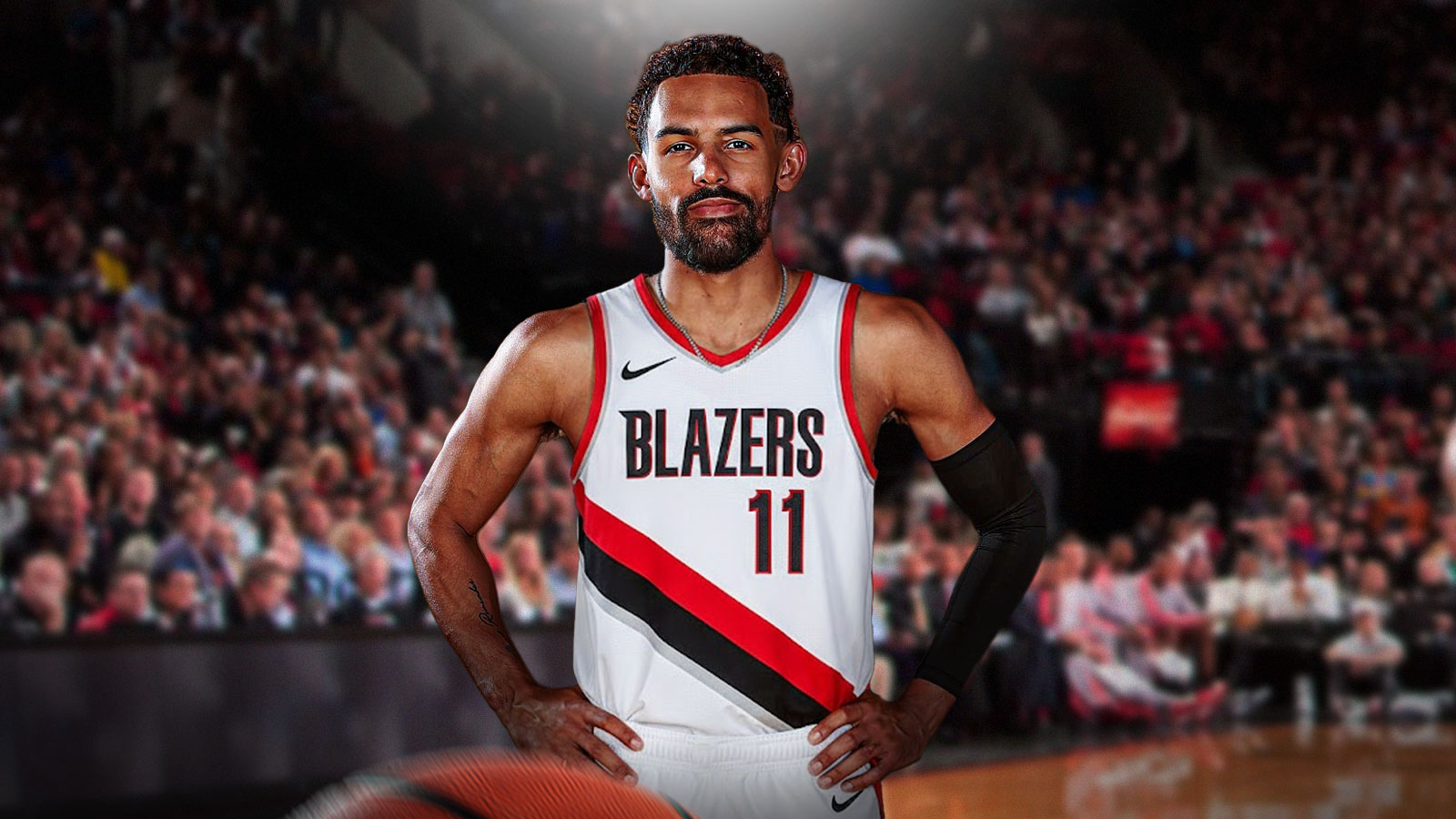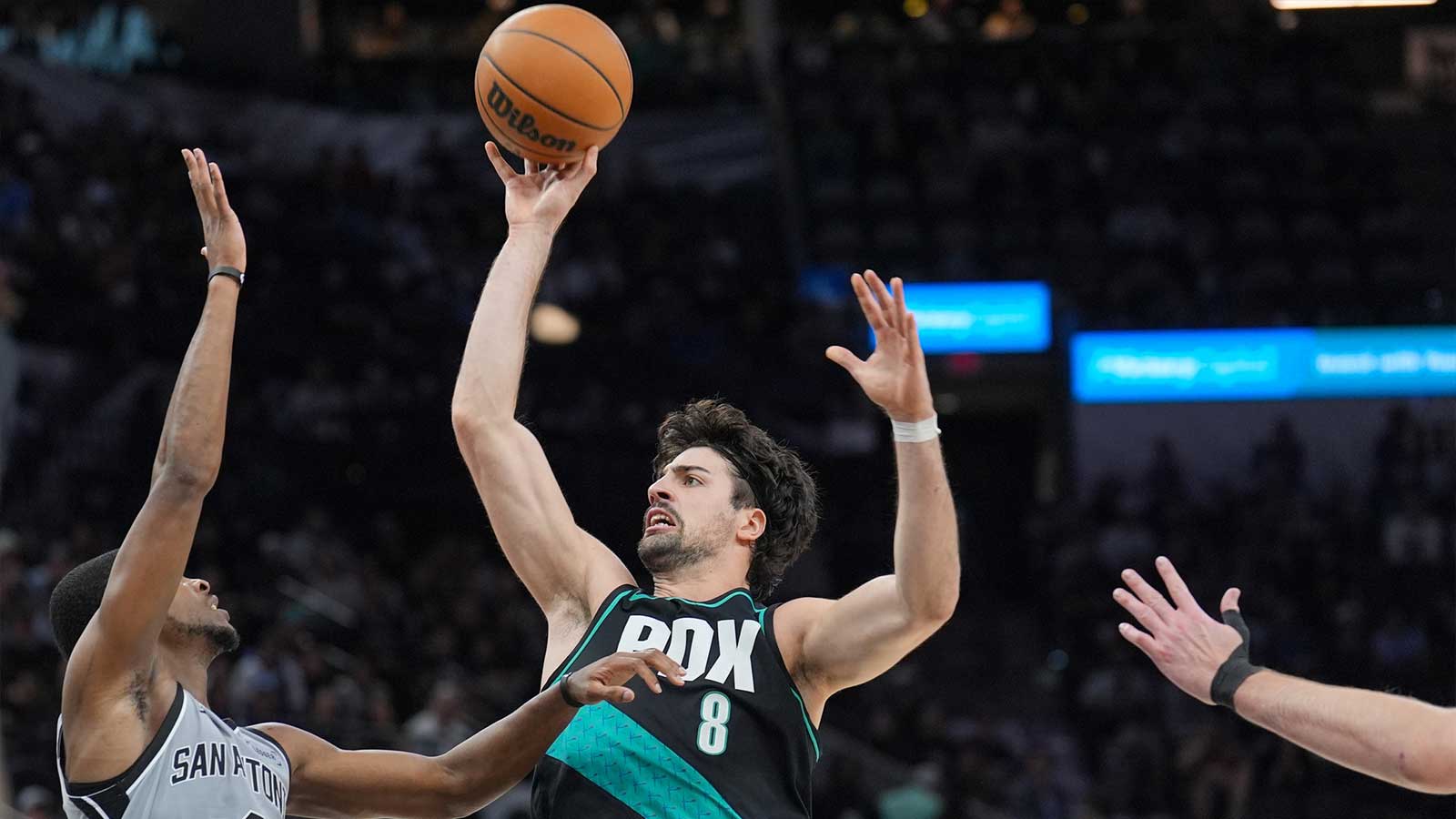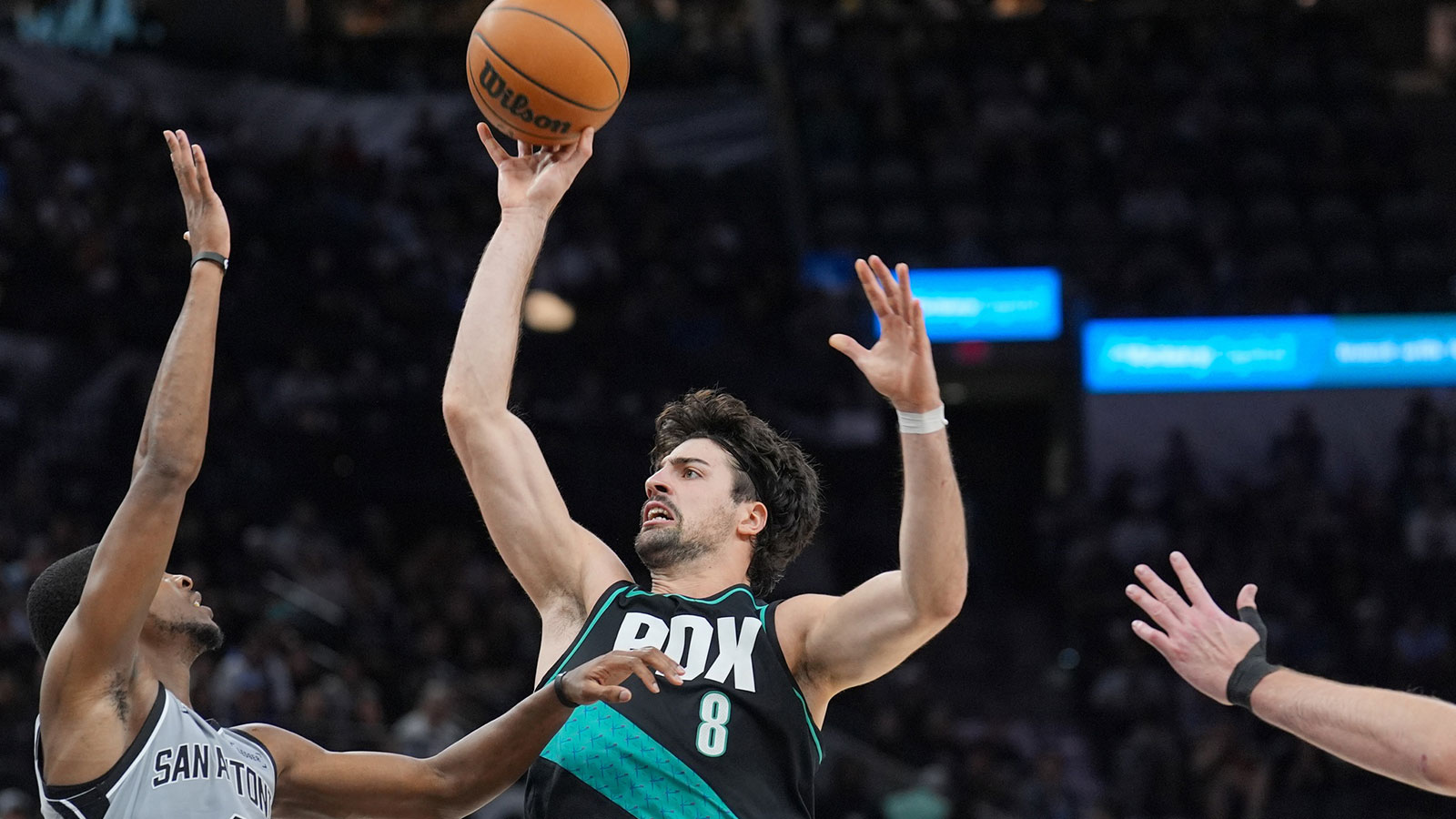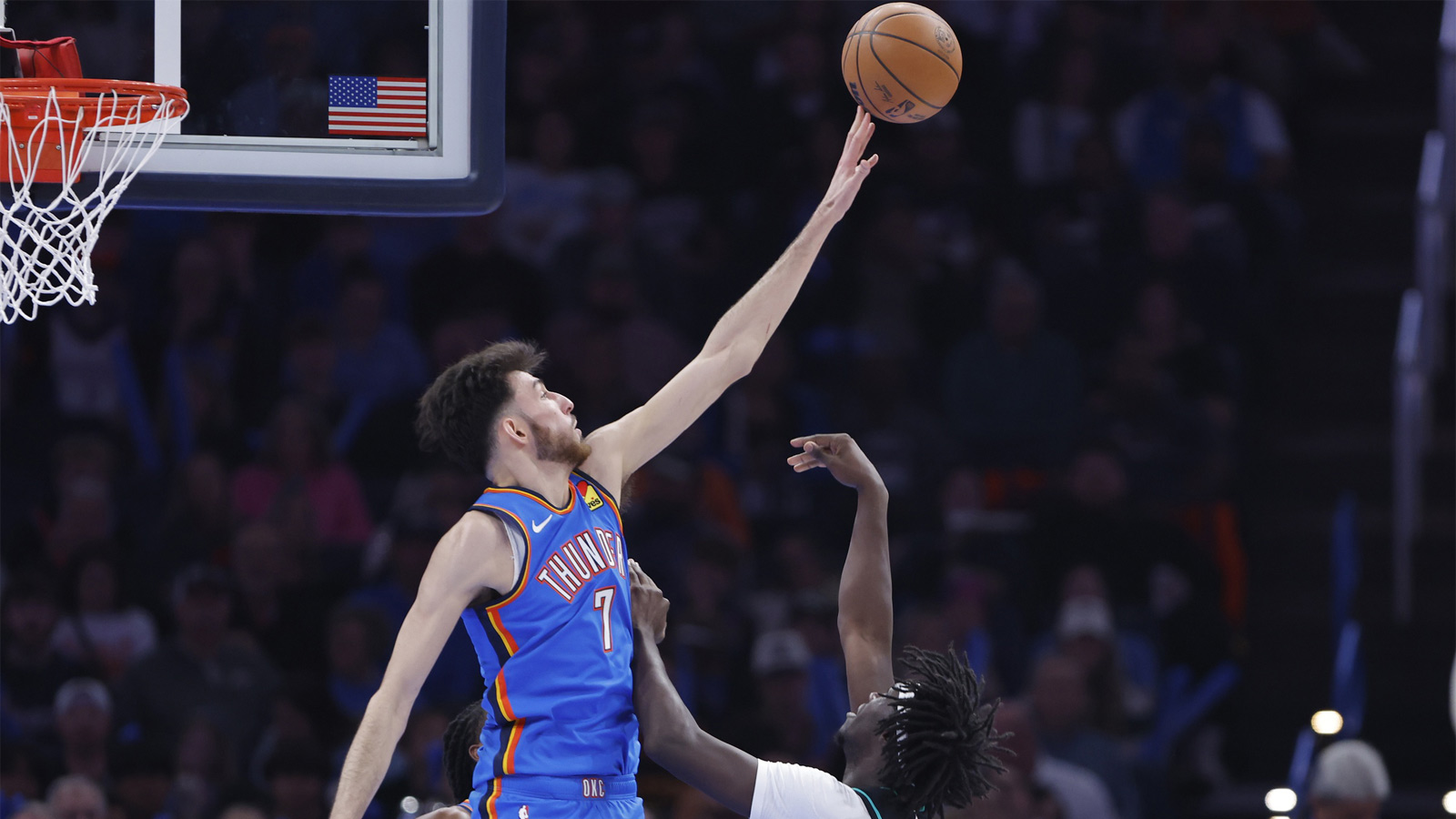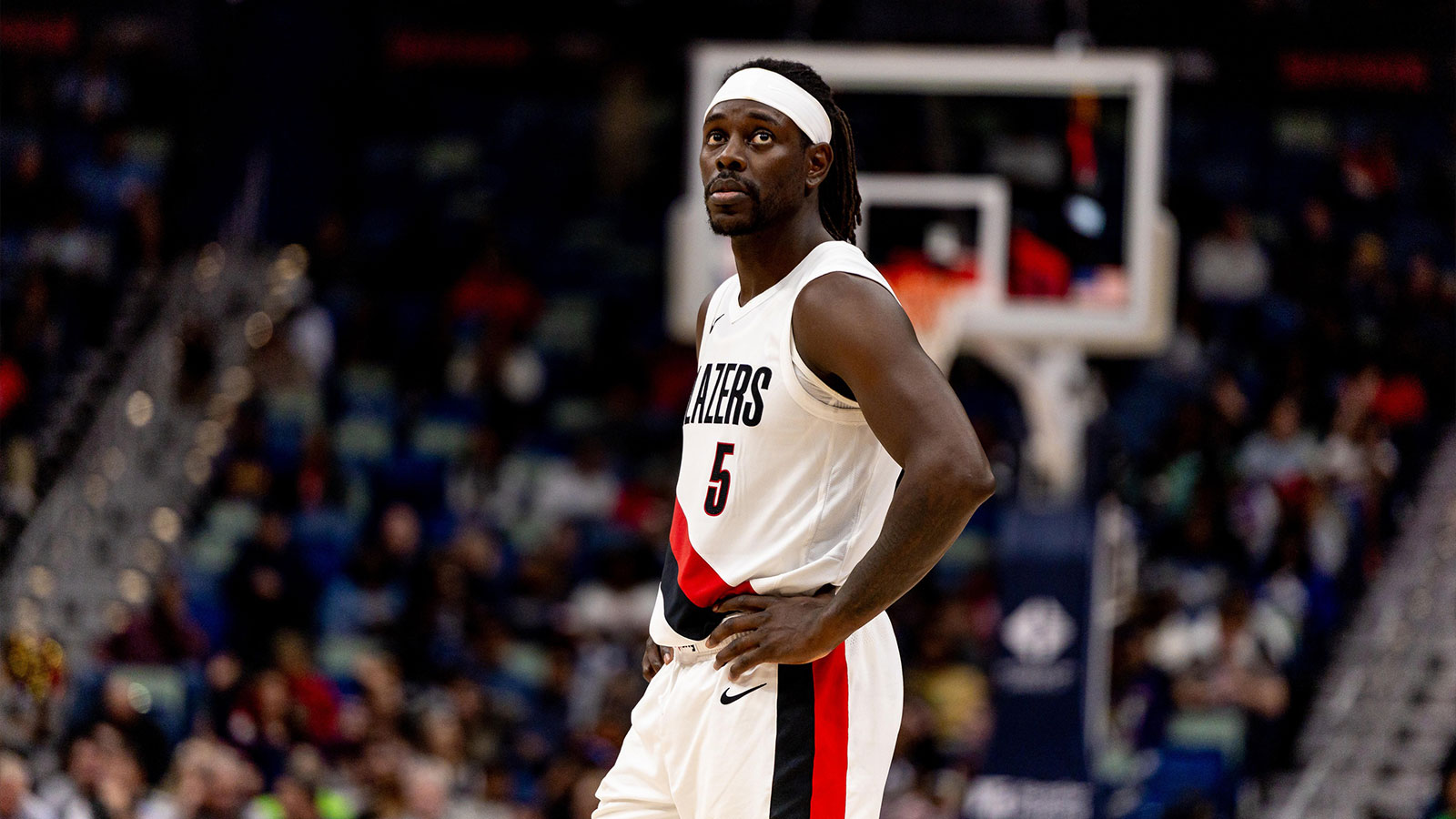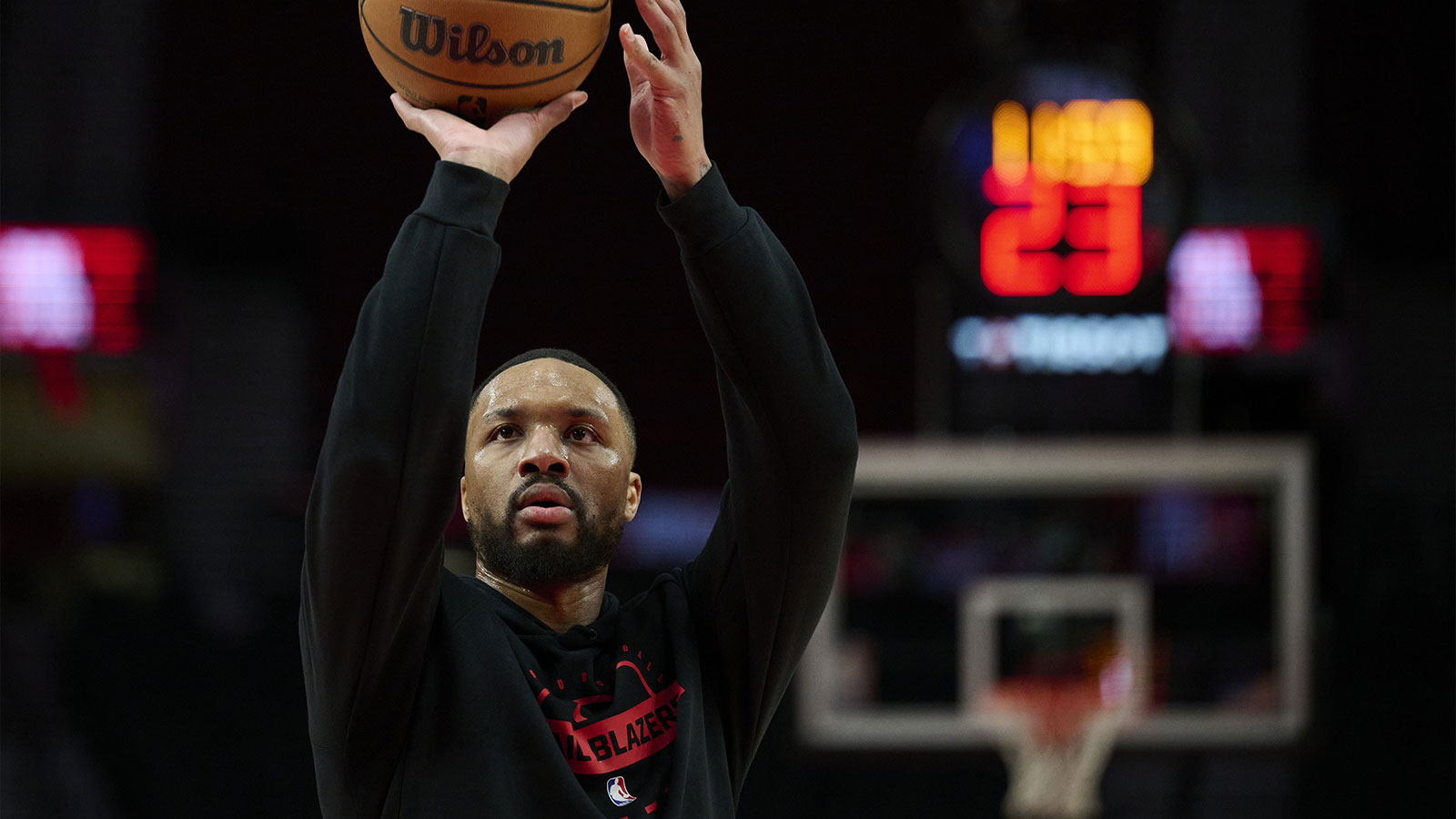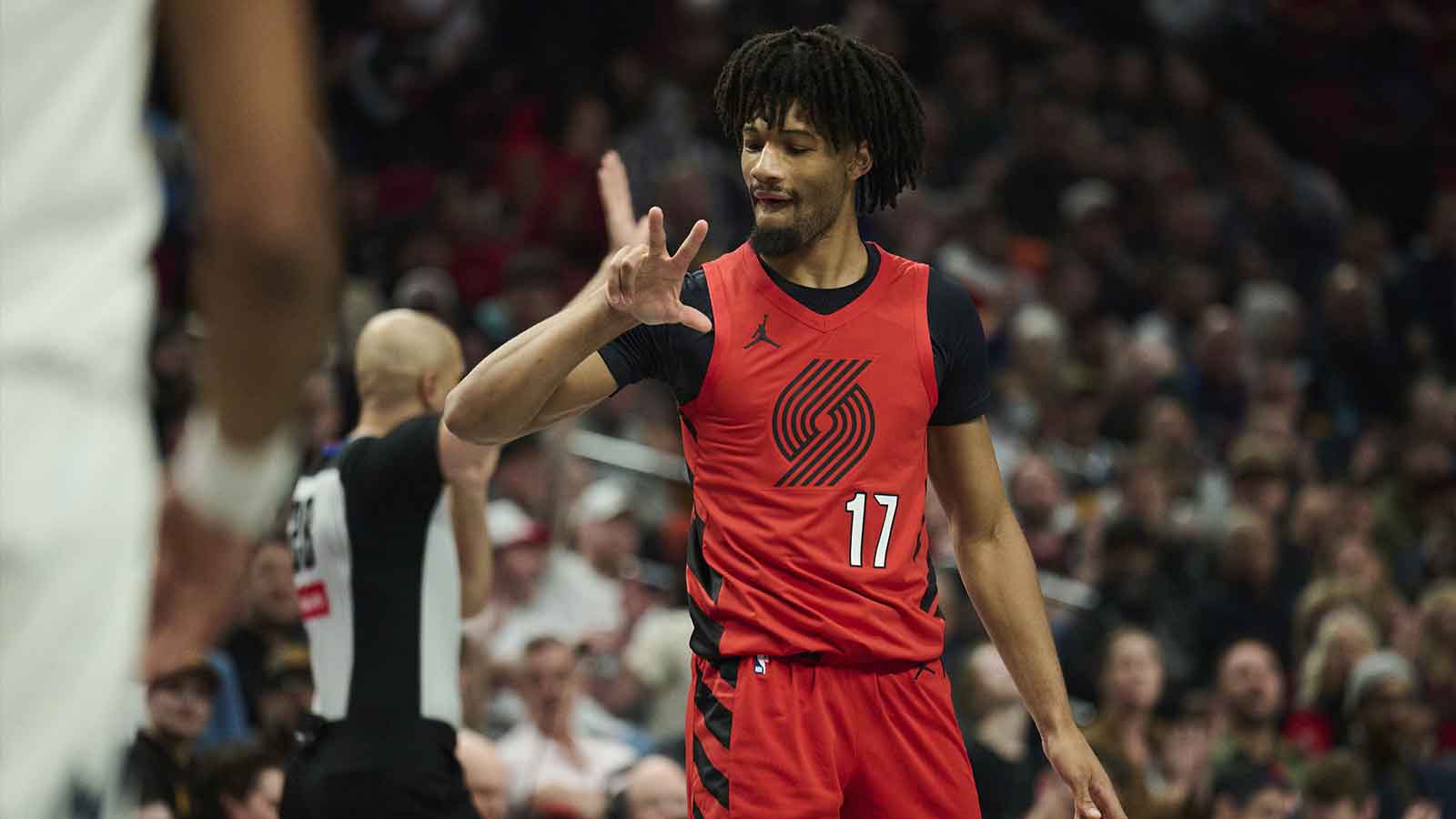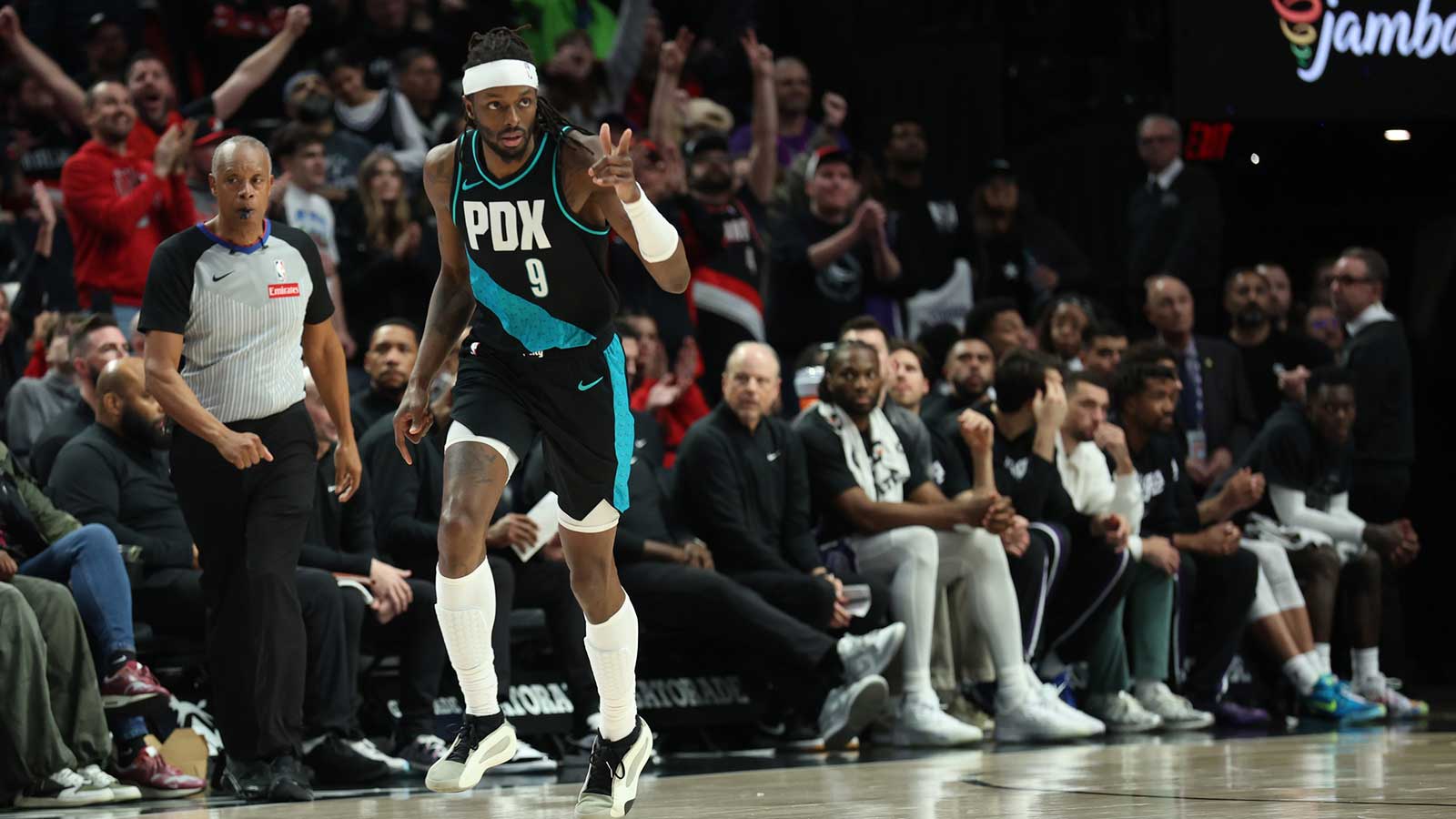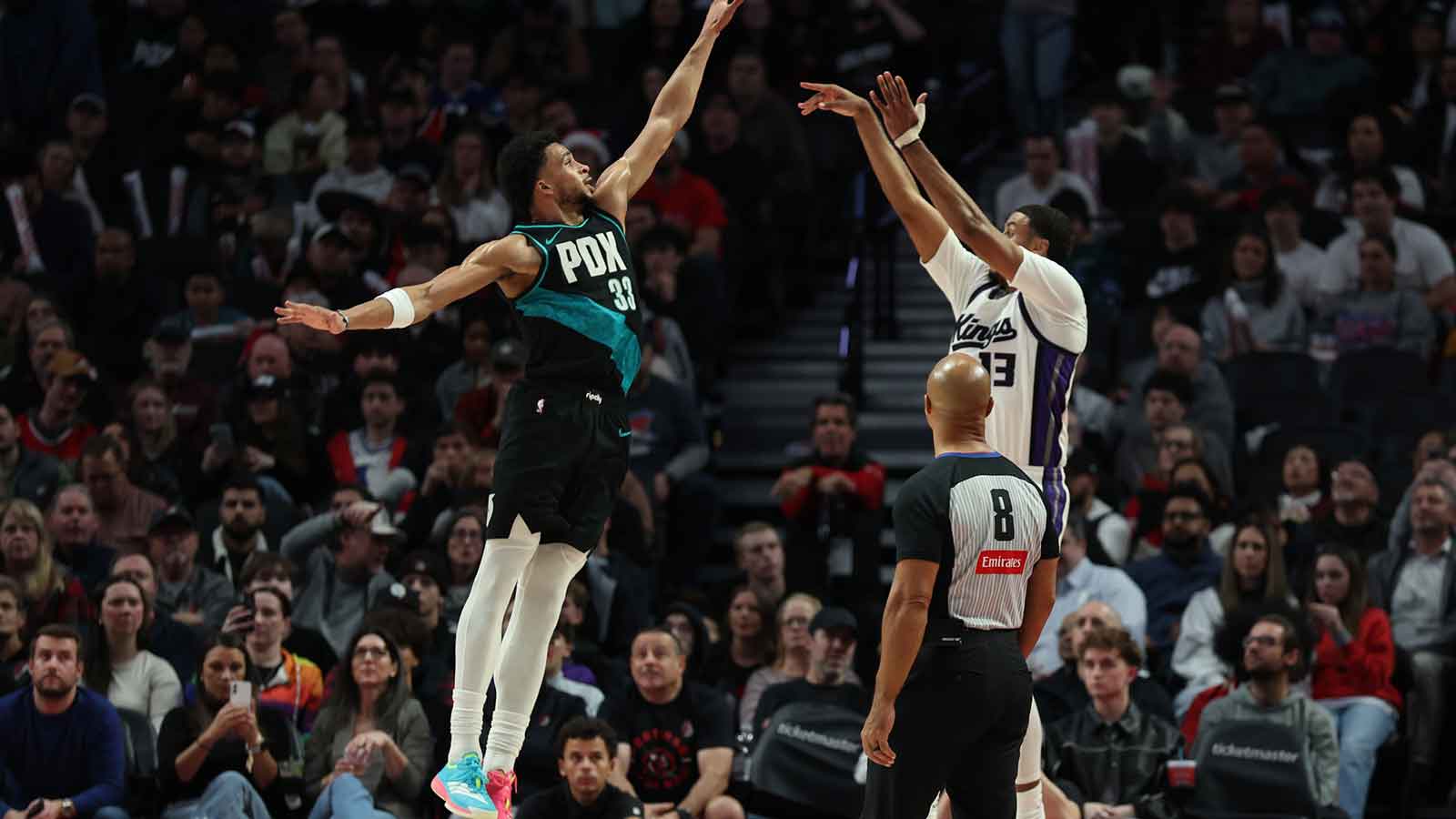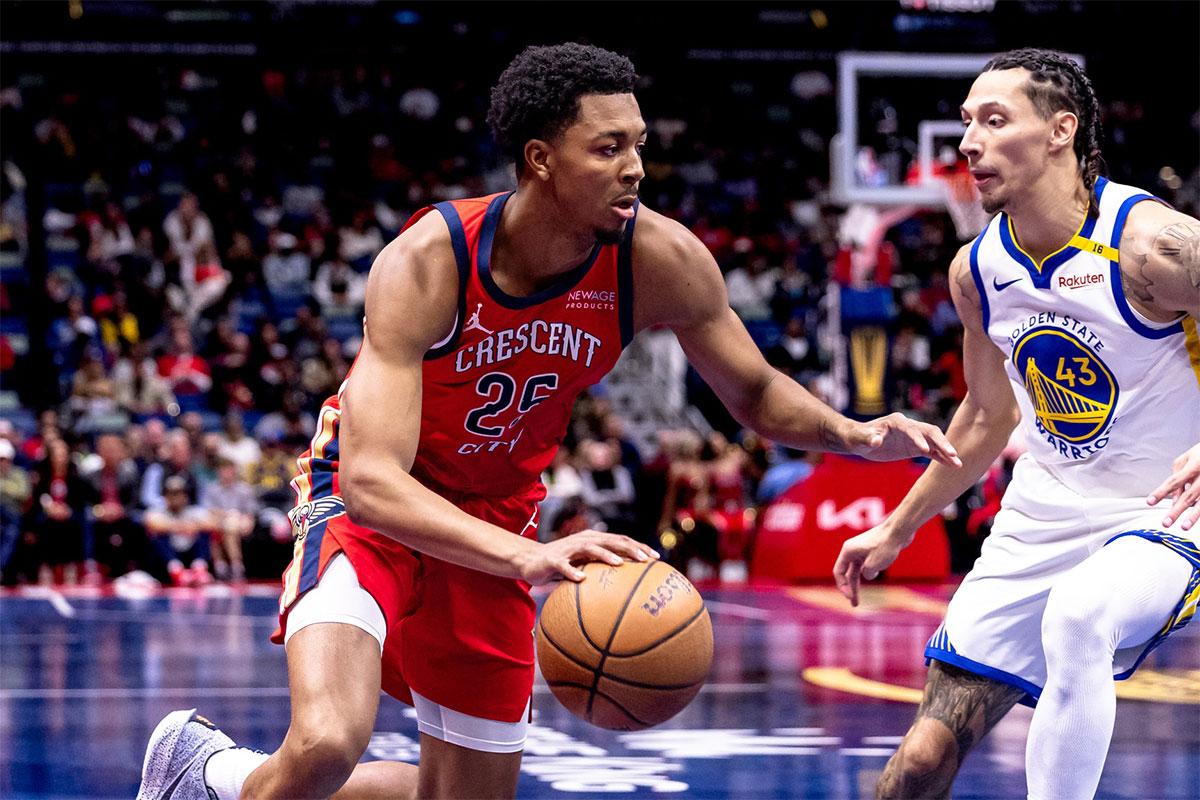The Portland Trail Blazers will take on a winless LA Clippers squad at Staples Center on Monday night, but don't blame Paul George. Picking up right where he left off from last year's playoffs, George has thrived as the Clippers' alpha dog without Kawhi Leonard over the first two games of the regular season, averaging 35.0 points, 10.5 rebounds and 5.0 assists with a scorching 66.7 effective field goal percentage. Even more impressive? He's put up those gaudy numbers despite what the Clippers believe has been a tough whistle from officials, earning just six free throw attempts.
LA, obviously, is a different beast with Leonard healthy, but its other superstar wing will pose plenty of problems for the Blazers, too. Here are three ways Portland can cool off George on Monday night.
Trapping Ball Screens
George abused the Blazers' conservative defensive scheme in recent years, his jumper unbothered by lackluster primary defense and inconsequential help from big men tethered to the paint. The former problem still exists, at least until Nassir Little proves he's worthy of the designated stopper role Chauncey Billups has afforded him. But Portland's new defensive scheme will give George a different look, especially should Billups feel compelled to sell out further to stop him by trapping ball screens.
The Blazers' system calls for bigs to meet dribblers at the level of the pick, corralling the ball before scurrying back to the paint as their teammates recover. LA's commitment to creasing the paint, kicking the ball out and finding open shooters is a recipe for success against a defense that relies on rotations, and George does it much better than any of his teammates. Amping up the aggression to trap George in pick-and-roll action and force the ball out of his hands is dangerous considering how easily the Clippers move the ball with a numbers advantage, but is no doubt the surest avenue toward keeping their singular All-Star in check.
Improved as he is as a passer and overall playmaker, George still can't consistently pick defenses apart like LeBron James or Luka Doncic when he's drawn two defenders to the ball. As long as Portland plays with the urgency and connectivity it did defensively against the Phoenix Suns, making sustained multiple efforts on a given possession, it should be enough to keep the Clippers' supporting cast from feasting behind the initial point of attack.
Doubling Or Overloading The Post
George, 6'8” with long arms, a high release point and deft handle, can get his shot pretty much whenever he wants against any opponent, but especially the Blazers. Little, starting for Norman Powell, will probably get the start on George, with Portland switching across four positions as off-ball screens and transition matchups dictate. There will inevitably be times during Monday's game when Damian Lillard, C.J. McCollum and even Anfernee Simons get stuck defending George. It's not like Little and Robert Covington, the former still at a major experience deficit and the latter lacking viable initial quickness, are ideal primary defenders for an oversized wing of George's caliber, either.
He's capable of making it look this easy on isolations from the pinch post no matter who's guarding him.
Devin Booker is, too, and indeed found some success attacking his man directly on Saturday despite a poor overall shooting night. But even early in that game, the Blazers proved they had a plan to slow him down in case he got going.
Watch Jusuf Nurkic on the play below, eyes never leaving George on his post catch, playing the cat-and-mouse game of feigning a double-team while overloading the strong side of the floor to clog driving and passing lanes. Covington is ready to pounce at a moment's notice, too.
Stymying George alone, unfortunately, won't be enough. Rotating and recovering with speed and precision from there will be of utmost importance to limiting an offense like LA's, which never features less than four threatening three-point shooters. Anything less than diligent second efforts like the one provided by Nurkic above will prove ineffective.
Matching Small For Small
The only team Billups is more familiar with than the Clippers is the Blazers. He spent last season as a rookie assistant under Ty Lue, remember, and told reporters after the win over Phoenix he still communicates with his former boss and close friend on a daily basis—and had no plans to stop in advance of Monday's game.
LA, unsurprisingly, leaned heavily on small-ball lineups in hard-fought losses to the Golden State Warriors and Memphis Grizzlies. Units without Ivica Zubac or Isaiah Hartenstein—Serge Ibaka is still recovering from the back injury that caused him to miss all but the first two games of last year's playoffs—have played 87 possessions so far, according to Cleaning the Glass, racking up a +19.5 net rating that ranks as the best in basketball. That's a small sample size, yet still indicative of just how dynamic the Clippers can be on both sides of the ball when downsizing.
LA will definitely go small against Portland. The question is how Billups will react to that game within the game, content to let Nurkic and Cody Zeller deal with small-ball fives like Marcus Morris and Justise Winslow or match Lue small for small. Keeping George in check, though, could be best accomplished by downsizing regardless of what lineups the Clippers deploy.
Playing Little, Covington and Nance together without a traditional center would at least give the Blazers three defenders who wouldn't be overwhelmed by George's size. The Blazers didn't switch across five positions every time when Powell's injury forced Billups' hand into those lineups versus Phoenix, but could certainly benefit by doing so when LA goes small. Doubling the post when Lillard or McCollum gets caught on George would be more manageable for those downsized quintets, too. They're just better suited to scramble across the floor as help defenders against a sweet-shooting squad like LA when George passes out of double-teams, key to Portland getting solid contests on catch-and-shoot threes.








